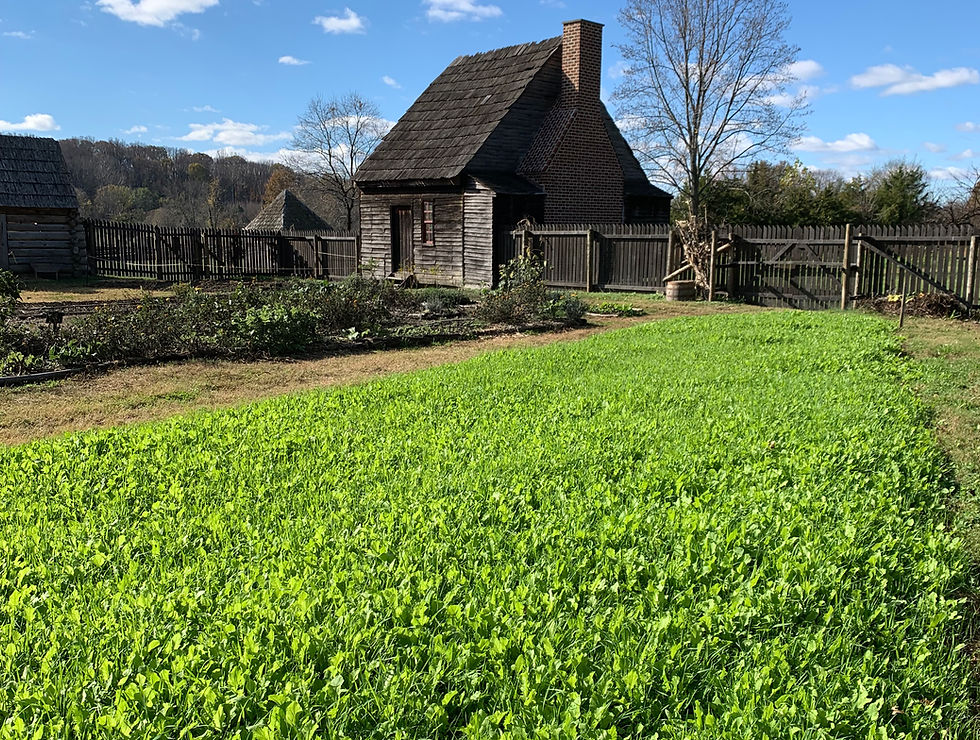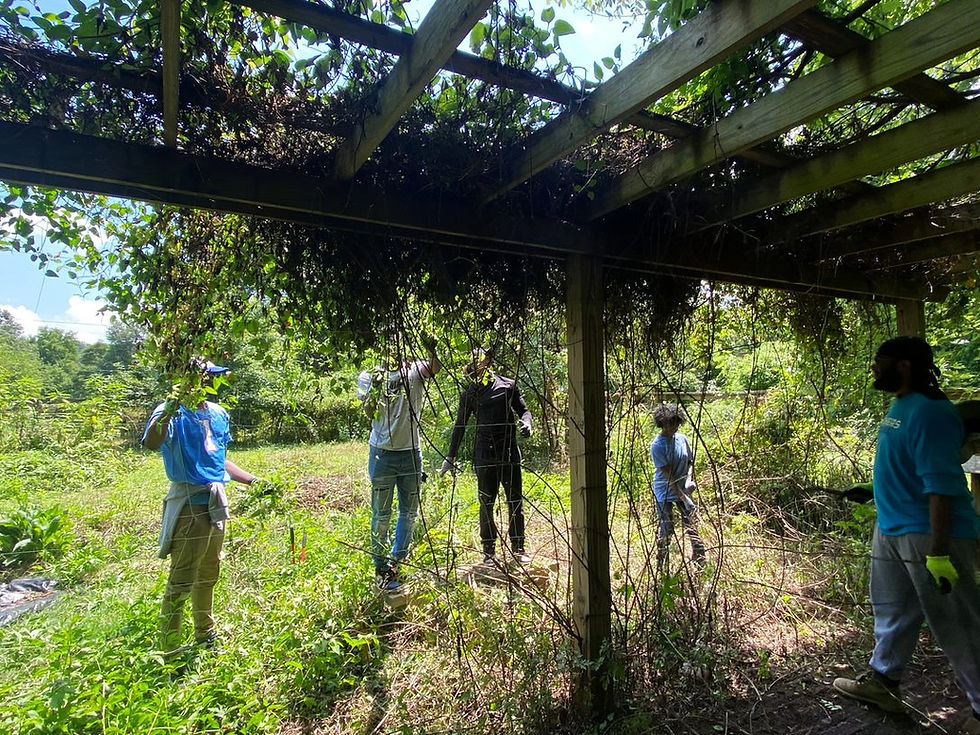Permaculture Design Certificate Course – UPDATE
- Accokeek Foundation

- Mar 30, 2017
- 3 min read
This past weekend, Permaculture course participants studied Natural Building and Passive Solar Energy at the Ecosystem Farm in Piscataway Park. Activities included building a cold frame and a worm bin, covering a hoop house, planting cover crops at our Persimmon guild and making Biochar, an ancient soil amendment.

Loose brush is burned inside a homemade furnace and removed before being buried.
Biochar
Biochar is a kind of charcoal, which converts agricultural waste, or in this case, tree branches, into a valuable soil enhancer, which sequesters carbon and can re-mediate contaminated soil. Native peoples of the Amazon River basin used this “Terra Preta” for hundreds of years to produce dark fertile agricultural soil. It can be made by using a home-made kiln with metal drums, or by lighting a fire to organic material at a garden bed, then burying it with soil to remove the oxygen and hold in the heat. The baked product is carbon-rich biochar.

Burning brush is buried underground to conserve heat and oxygenate the soil.
Guild Design
The ongoing course project is an Asian Persimmon “guild.” A plant guild mimics the interdependence of naturally occurring plant communities of plants/trees, insects, and animals, which benefit each other to accumulate nutrients control pests, provide shelter or shade, and reduce root competition. Many indigenous cultures have farmed sustainably for centuries with agricultural guilds.
The “3 Sisters” guild of pole beans, corn and squash is a common Native American example that demonstrates how the three plants work harmoniously. Corn provides a scaffold for the bean vines. Beans provide nitrogen for the corn. The large squash leaves shade and protect the soil as a living mulch, inhibit weeds, and keep the soil moist and cool. These mutually beneficial relationships produce higher crop yields, with less water, and no fertilizer, in smaller square footage, than if any of the 3 crops were planted independently.

Permaculture guild design is taught to participants of the certification course.
Following the indigenous model, a Permaculture guild is a highly productive artificial assembly of useful native and non-native plants. It is designed to provide food, herbs, pest control, pollination, and restore soil, while reducing the gardener’s labor and eliminating the need for chemical pesticides, herbicides and other synthetic additives.
In the fall, course participants sheet-mulched the site and planted the self-pollinating Persimmon in the center with a Southern Bayberry wind buffer. This month they prepared the site further with these functional bulbs and cover crops:
Daffodil – at the future drip line as a “fortress plant” to suppress grass and repel rodents
Daikon Radish – breaks up compacted soil, edible
Fava Bean – fixes nitrogen, edible, poultry forage
Dutch White Clover – Ground cover; fixes nitrogen; attracts beneficial insects – lady bug, minute pirate bug, and lacewing

The sketched plan detailing the location of plants for the Asian Persimmon guild.
They also started perennial seedlings to add to the guild when the weather warms in May. These plants provide food, fiber, medicine, attract beneficial insects, repel pests, fix nitrogen and/or accumulate minerals in the soil:
Yarrow – mines copper, potassium and phosphorus; attracts lady bugs, hoverfly, lacewing and parasitic wasp
Sorrel – edible; mines calcium, iron, potassium and phosporus
Bronze Fennel – culinary herb; attracts lady bug, hoverfly, parasitic wasp and lacewing
Flax – fiber for cloth; mines manganese, iron and potassium
Lemon Balm – tea; medicinal/culinary herb; repels voles and rabbits; mines phosphorus; attracts tachinid fly, hoverfly and parasitic wasp
Salad Burnett – edible salad green; mines sulfur, calcium and magnesium
Good King Henry – perennial vegetable (like spinach), standing biomass
Stay tuned for the next phase of the Asian Persimmon Guild and other course projects!







